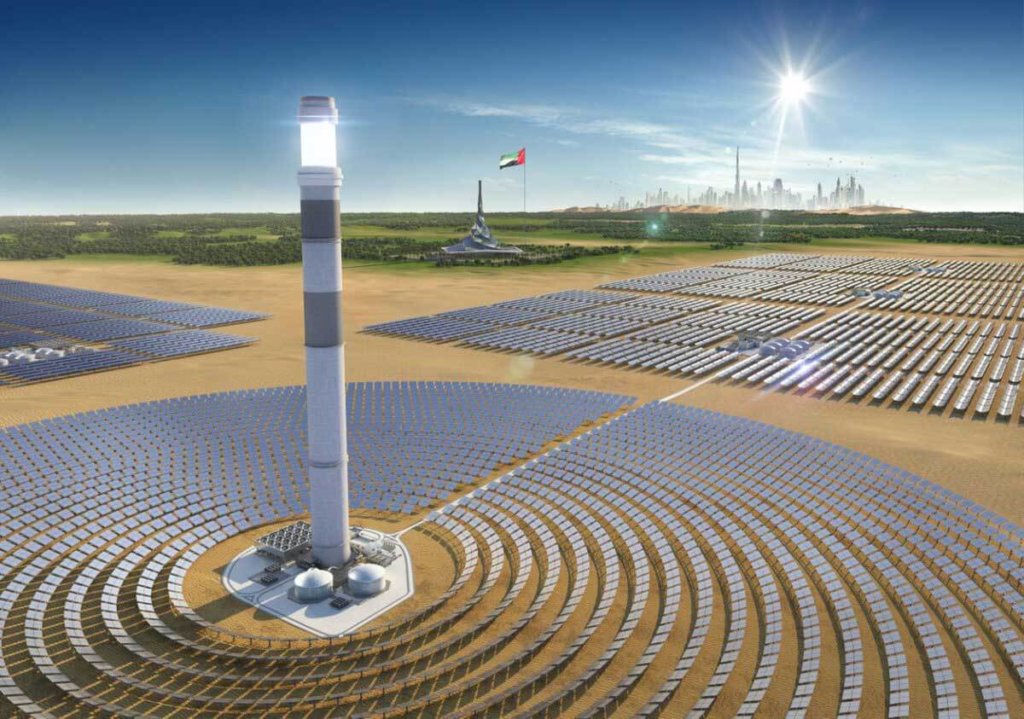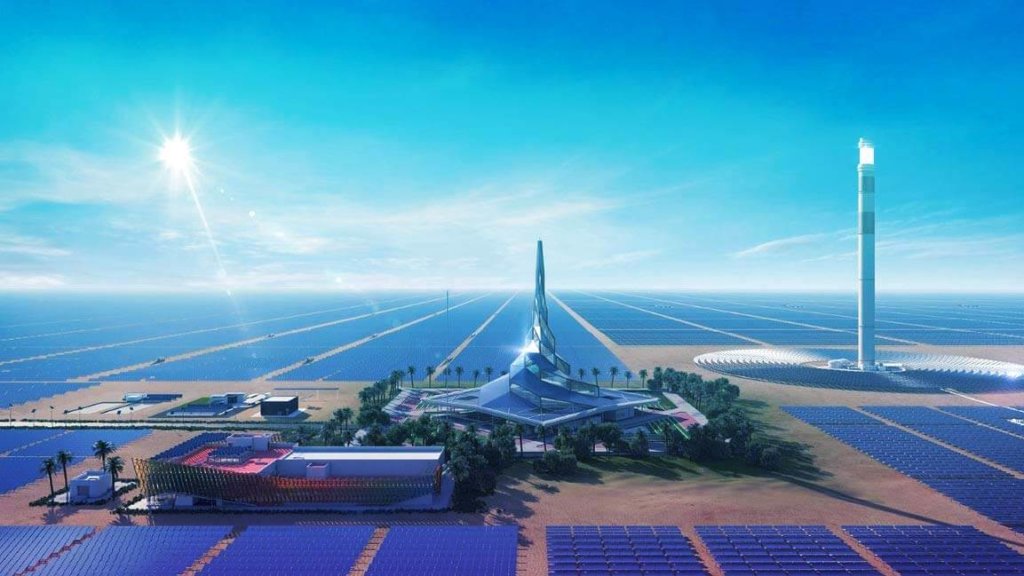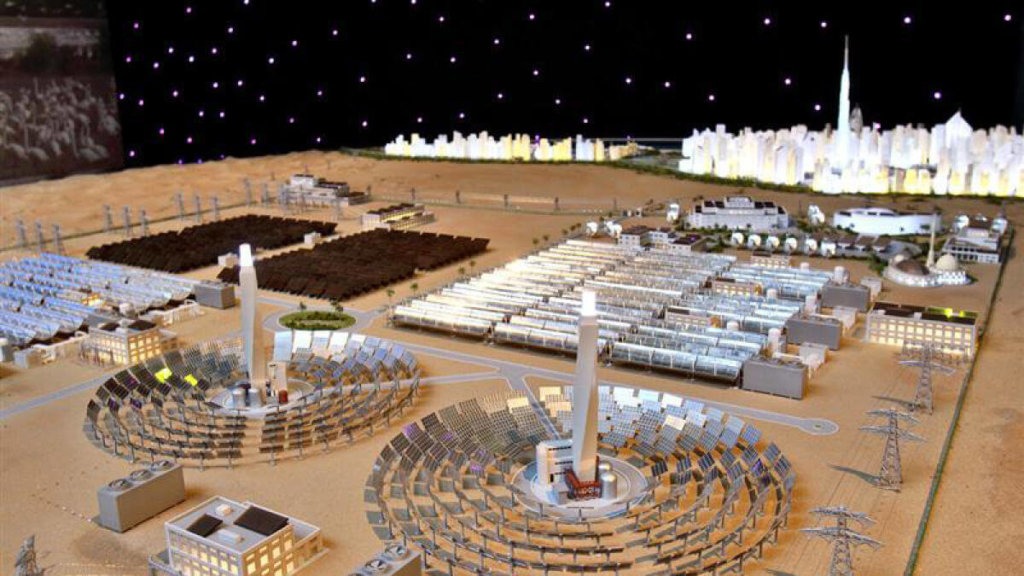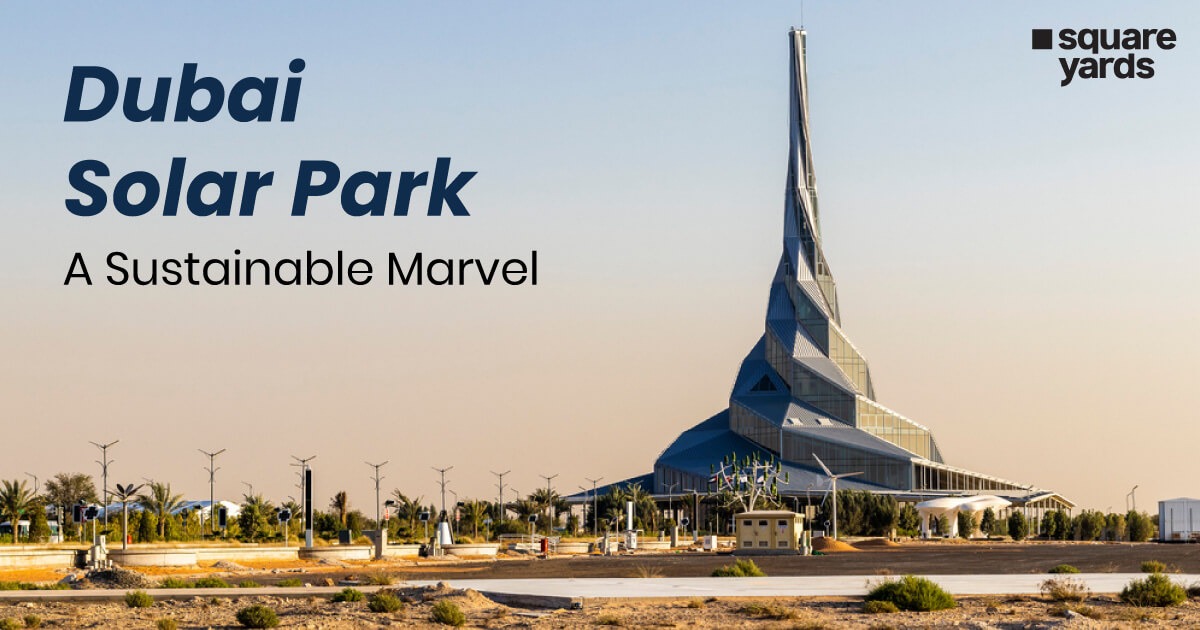Over the past ten years, the UAE’s efforts to ensure sustained national growth have heavily focused on producing clean energy. One such project is the Mohammed bin Rashid Al Maktoum Solar Park, often known as Dubai Solar Park, which is helping to establish the UAE as a leader in promoting sustainability. Today, we take a deeper look at the achievements of this unique Dubai Solar Park facility!
The Mohammed Bin Rashid Al Maktoum Solar Park
The UAE announced the Green Economy program in 2012 to promote sustainable growth and position the nation as a leader in green technology, goods, and economies. Establishing the DEWA Solar Park in Dubai supports this program and a broader commitment to sustainable development initiatives in the UAE. The ambitious objective of the Dubai Clean Energy Strategy 2050 is to achieve a major portion of the UAE’s energy mix based on renewable energy sources. By the year 2050, the policy seeks to generate 42,000 MW (megawatts) or 75% of the emirate’s energy from clean sources.
History of the Solar Park

On October 22, 2013, the project’s 13 MW first phase went into operation, greatly reducing carbon emissions in accordance with the Clean Development Mechanism. The first phase’s execution was crucial in helping Dubai achieve its goals of diversifying its energy mix. The first phase is about 153,000 solar cells coupled to 13 transformers in inverter buildings. 28 million kWh of energy is produced annually from the output, which is converted to 33 kV. The first phase makes an annual decrease in carbon emissions of around 15,000 tons possible. The project’s surface area is 280,000 square meters.
The 200MW second phase of the solar park was officially opened on March 20, 2017, by H.H. Sheikh Mohammed bin Rashid Al Maktoum, Vice President and Prime Minister of the UAE and Ruler of Dubai. It uses the IPP model and is the largest and first project of its kind in the region’s solar power industry. A partnership led by ACWA Power from Saudi Arabia and TSK from Spain invested AED 1.2 billion to build the plant. The initiative reduces annual carbon emissions by 214,000 tonnes while providing sustainable energy to 50,000 homes in the Emirate. Over a 4.5 square kilometre area, 2.3 million photovoltaic solar panels were deployed during this phase. The initiatives by Shuaa Energy 1, which DEWA and the collaboration established,
The 800MW photovoltaic third phase of the solar park will be built by a consortium led by Abu Dhabi Future Energy Company (Masdar) and EDF Group through its subsidiary, EDF Énergies Nouvelles, according to DEWA’s announcement in June 2016. DEWA set a new global record of USD 2..99 cents per kW/h for the IPP bid. With a sophisticated solar tracking system that increases generation by 20–30% compared to fixed installations, this solar plant—the first of its kind in the Middle East and Africa region—is a pioneer in the field. On May 1, 2018, the third phase’s 200MW initial stage started operating. In 2019 and 2020, the second and third phases went into operation.
The solar park’s fourth phase, which combines CSP and photovoltaic technologies, is the world’s largest single-site solar IPP project. At a cost of AED 15.78 billion, three technologies will be used in this phase to generate 950 MW of clean energy. It will have a total capacity of 950 MW, of which 700 MW will come from concentrated solar power, distributed as follows: 250 MW from photovoltaic solar panels, 100 MW from a solar tower, and 600 MW from a parabolic basin complex. The project will use 70,000 heliostats and have the longest thermal storage capacity in the world—15 hours—to provide energy around the clock. At 260 meters, the CSP project’s solar tower will be the tallest in the entire globe.
DEWA uses photovoltaic solar panels to construct the 900MW fifth phase of the Mohammed bin Rashid Al Maktoum Solar Park. By partnering with the consortium led by ACWA Power and Gulf Investment Corporation and using the IPP model, DEWA once again set a global record by receiving the lowest bid of USD 1.6953 cents per kilowatt hour (kW/h) for this project phase. Starting in Q2 of 2021, this phase will gradually go into operation.
Solar Park’s Contribution to the Strategy?

One of the cornerstones of this modern plan is the Mohammed bin Rashid Al Maktoum (MBR) Solar Park. His Highness Sheikh Mohammed bin Rashid Al Maktoum, Vice President and Prime Minister of the United Arab Emirates and Ruler of Dubai, introduced it in 2012. The construction of the solar park will strengthen Dubai’s position as a world leader in the clean and renewable energy field. Based on the Independent Power Producer (IPP) model, the Dubai Solar Plant is the world’s largest single-site solar energy facility. The Dubai Electricity and Water Authority (DEWA) has implemented it. With a total expenditure of AED 50 billion, the Dubai Solar Park is projected to produce over 5,000 MW by 2030! The MBR Solar Park is anticipated to reduce 6.5 million tonnes of carbon emissions yearly once finished, which is one of its intriguing facts.
Mohammed Bin Rashid Al Maktoum Solar Park’s Other Projects
A water desalination facility and a Research and Development Center are also part of the Dubai Solar Park.
-
Dubai Solar Park Desalination Plant

The water desalination facility uses Reverse Osmosis (RO) technology and is powered by solar energy. A day’s worth of production is 50 cubic meters or roughly 11,000 gallons. This creative idea to supply clean water to the needy in other nations through various activities is partnered with the UAE Water Aid Foundation (Suqia).
-
Innovative Centre
At the Dubai Solar Plant, there are numerous labs, workshops, and testing facilities. The following four areas are the main focus of the innovation centre at Dubai Solar Park:
-
- Production of electricity using solar energy and other clean energy sources
- Including smart grids
- Usage of less energy
- Water
Within the building is the first 3D-printed laboratory in the world. The DEWA Robotics and Drone Laboratory at the solar park built the Guinness World Records-holding lab. The Innovation Center has made some significant progress in a short amount of time. Some of the major achievements are listed below:
-
- The innovative centre achieved LEED Platinum certification in the first quarter of 2020 with a score of 101 out of 110.
- It is the only government building in the world to receive more than 100 points in the new construction category. High marks in indoor environmental quality, energy efficiency, water efficiency, innovation, and design helped to achieve this.
- It is the public assembly building with the highest score globally in the new construction category.
- It is the largest and first government building to have the Federal Youth Authority’s “Done by Youth” label.
How and When to Visit the Dubai Solar Park?
You can view this incredibly amazing engineering achievement in person and learn more about the project by going to the Mohammed Bin Rashid Al Maktoum Solar Park. The last entry is at 2:30 p.m. The park is open from 9:00 a.m. to 4:00 p.m., Saturday through Wednesday. Thursday hours are 9:00 a.m. to 12:00 p.m., with the final entry at 10:30 a.m. Visitors aren’t allowed on Fridays or on federal holidays. As the latest visiting time of the day is 2:30 p.m., make sure to schedule your visit before then.
The entrance charge is AED 50 for adults and AED 30 for students and children under the age of 3. Entry to the Dubai Solar Park is complimentary for those with the will. You must pay an extra AED 30 for each of the Hologram Show and Metaverse Experience. An introduction video explaining the purpose of the solar park will be shown for you in the theatre as part of the facility tour. Following that, you will be given a tour of the MBR Solar Park Dubai Exhibit Area, which is filled with many zones that are informative and may be explored, including:
-
- A historical journey
- Light attributes
- Solar attributes
- The energy of the future
- Hologram display
- Metaverse encounter
When you visit, kindly be careful to abide by the facility’s guidelines. Smoking and having pets are not permitted in Dubai Solar Park. Additionally, it’s important to dress accordingly. The official website of Al Maktoum Solar Park Dubai has all the information you need.
DUBAI SOLAR PARK LOCATION
Saih Al-Dahal is where the Dubai Solar Park is located, around 50 kilometres south of the city’s centre.
More Useful Articles for You :
|
Know The Upcoming Projects in UAE 2023 |
|
|
Guide To Bitcoin Tower in Dubai |
|
|
All About Burj Binghatti |
|
|
Explore Dubai 2040 Urban Master Plan |
Frequently Asked Questions (FAQs)
How much does it cost to go to the solar park in Dubai?
The entrance charge is AED 50 for adults and AED 30 for students and children under the age of 3 years.
How to visit Dubai Solar Park?
Dubai Solar Park stays open from 9:00 a.m. to 4:00 p.m., Saturday through Wednesday. Thursday hours are 9:00 a.m. to 12:00 p.m., with the final entry at 10:30 a.m. Visitors aren't allowed on Fridays or on federal holidays.
Which is the largest solar park in the UAE?
Dubai Solar Park is the largest one in the UAE.
What is the capacity of Al Maktoum Solar Park?
Al Maktoum Solar Park is expected to be 5,000 MW by the end of 2030, and starting in that year, it will help decrease more than 6.5 million tCO2e annually.
How will Dubai Solar Park help contribute towards sustainable development goals in the UAE?
The first of the three primary contributions made by the Dubai Solar Park project is the consideration of the environment. Utilizing natural resources to produce electricity will greatly reduce reliance on carbon. we will contribute to making our city a safe and healthy place to live. It also backs the social programs of the government. The good governance model and the rules for work ethics are followed in all initiatives. Finally, there are considerable economic advantages. The populace already works in the energy sector in significant numbers, and this figure keeps growing with each project. Additionally, the region's companies will surely profit from lower energy expenses.
What are the operational challenges that Dubai Solar Park faces?
The landscape of Dubai has its own unique set of management difficulties. The power generation capacity might be negatively impacted by dust collection on modules. The modules are coated with panels to help counteract this.Temperature variations may eventually hasten the degeneration of photovoltaics. Dubai experiences summertime highs of 50 degrees Celsius and lows of 15 degrees Celsius at night, which can raise the project's cost. As a result, the employees at the Mohammed Bin Rashid Al Maktoum Solar Park in Dubai encounter numerous difficulties.



































